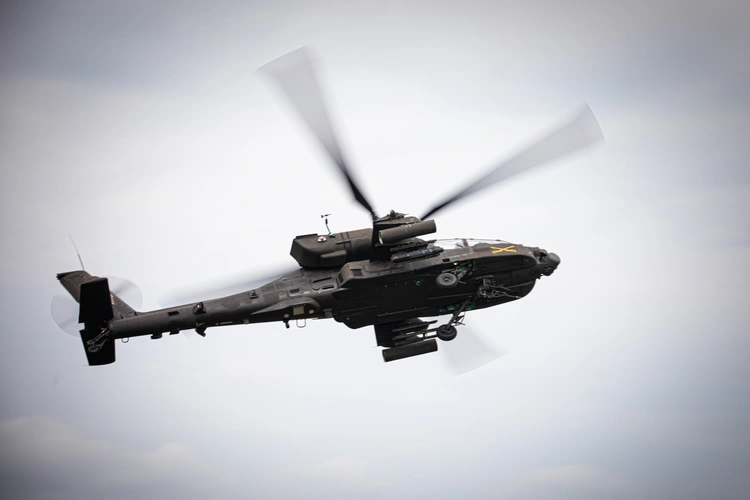The United States Army has successfully demonstrated the ability of AH-64E Apache helicopters to detect, track and defeat unmanned aircraft systems.
During the demonstration, Apache aircrews executed engagements with multiple armament options to include the Joint Air-to-Ground Missile, HELLFIRE variants, the Hydra-70 Guided Rocket with an Advanced Precision Kill Weapon System guidance section and 30mm rounds. All missile systems successfully destroyed their targets, the Hydra-70 Guided Rocket with APKWS achieved three of four target kills, and 30mm rounds neutralised designated aerial threats.
The Army said these results confirm that Apache can deliver “persistent, flexible, and cost-effective options” to defeat threats posed by uncrewed aerial systems (UAS). “Existing C-UAS systems are predominantly ground-based and limited in number, creating gaps that adversaries can exploit,” the Army said. “By leveraging Apache helicopters, commanders gain a mobile platform able to deploy rapidly into threatened areas to detect targets that are masked from static detection systems, engage targets across three dimensions of battlespace, provide early warning and situational awareness via modern sensors and networked systems for battlefield situational awareness sharing, and data sharing across networks like Link 16.”
Shortly prior to the Apache demonstration, the US Army achieved its first drone-on-drone strike. The successful take-down came after weeks of training. US Army paratroopers flew for hours each day, building muscle memory while rehearsing how to engage a fast-moving aircraft. The operators flew daily in changing weather, preparing for a target that could appear anywhere across the range.
For more information
Image: AH-64E Apache (US Army photo by Spc. John Farmer)




